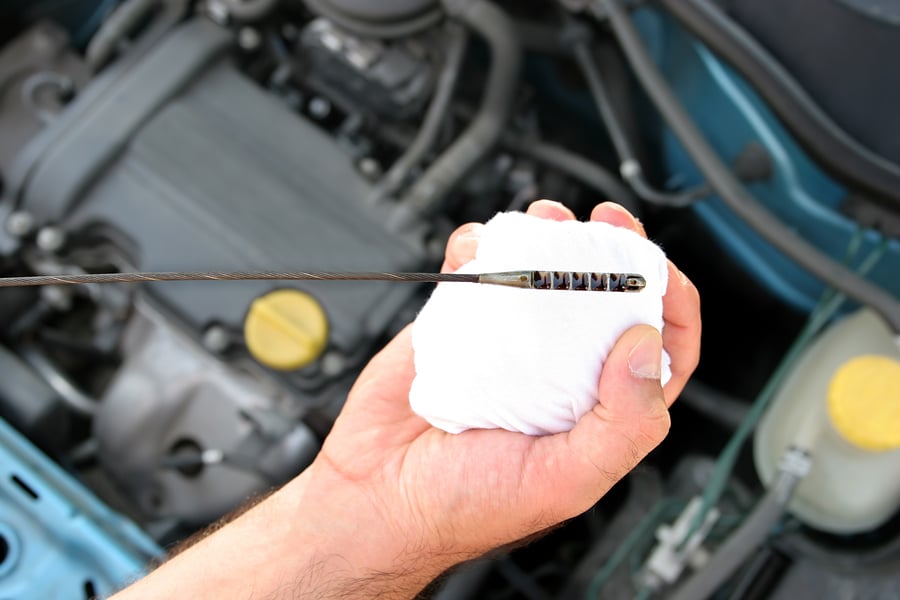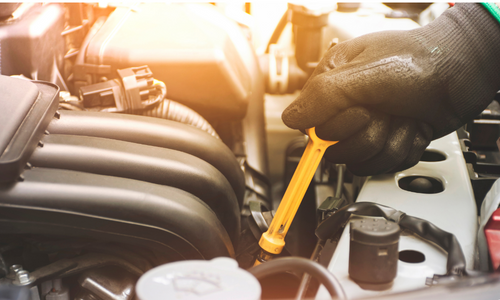How to know if car needs oil change? Pay attention to service intervals, or use the dipstick to check oil level and quality. Regular oil changes are crucial to maintaining engine health and performance.
It’s essential to keep track of the recommended mileage or time interval for oil changes specified in the owner’s manual. Additionally, visual inspection of the oil on the dipstick can help determine if it’s dirty or low, indicating the need for a change.
Neglecting oil changes can lead to engine damage and costly repairs, so staying vigilant and following the manufacturer’s guidelines is essential. Regular maintenance ensures the longevity and reliability of the vehicle, making it necessary to remain proactive in oil change maintenance.
Unusual Engine Noises
Unusual engine noises can indicate that your car needs an oil change. Paying attention to these sounds can help you identify potential issues early and prevent further damage to your vehicle.
Knocking Or Rattling Sounds
Knocking or rattling sounds from the engine can signal a lack of proper lubrication. This noise may indicate that the engine components are not receiving enough oil, resulting in increased friction and wear. When you hear these sounds, you must schedule an oil change promptly to avoid potential engine damage.
Loud Ticking Or Clicking
Loud ticking or clicking noises may suggest the engine is not adequately lubricated. This could indicate low oil levels or degraded oil that no longer effectively reduces friction between moving parts. Addressing this issue by changing the oil can help maintain your engine’s performance and prolong lifespan.

Credit: www.hollenshades.com
Excessive Exhaust Smoke
Regular oil changes are essential for maintaining the health and performance of your car’s engine. Excessive exhaust smoke is one of the telltale signs that it’s time for an oil change. By paying attention to the color and consistency of the smoke from your car’s exhaust, you can determine if an oil change is needed. Let’s look at the three types of exhaust smoke and what they indicate.
Blue Smoke
Blue smoke from your car’s exhaust is never a good sign. It typically indicates that oil is being burnt within the engine. This could be due to worn-out piston rings or valve guide seals leaking oil into the combustion chamber. If you notice blue smoke, it’s crucial to address the issue promptly to prevent further damage to your engine. Ignoring this problem could lead to decreased power, reduced fuel efficiency, and expensive repairs.
White Smoke
White smoke is another type of exhaust smoke that should raise a red flag. While a small amount of white smoke on a cold day startup is typical, continuous plumes of white smoke during regular driving can indicate a more significant issue. White smoke is often caused by coolant leaking into the combustion chamber, resulting from a blown head gasket or a cracked cylinder head. If you spot white smoke from your car’s exhaust, it must be inspected by a professional mechanic immediately to prevent further damage to your engine.
Black Smoke
Black smoke is usually associated with an overly rich fuel mixture or incomplete combustion. Various factors, including a clogged air filter, faulty fuel injectors, or a malfunctioning oxygen sensor, can cause it. In some cases, excessive black smoke may also indicate a problem with the engine’s internal components, such as worn-out piston rings or a malfunctioning turbocharger. Regardless of the underlying cause, black smoke should not be ignored, as it can lead to decreased fuel efficiency and potential damage to your car’s engine. If you notice continuous black smoke, you should have your vehicle inspected by a qualified mechanic to address the problem.
By monitoring the quality and color of the smoke your car produces, you can gain valuable insights into its overall health. If you observe excessive exhaust smoke, such as blue, white, or black smoke, it’s essential to take appropriate action promptly. Regularly scheduled oil changes can prevent major engine issues and ensure your car continues to perform at its best.
Decreased Performance
If your car is not performing like it used to, it could be a sign that it needs an oil change. Over time, the oil in your car’s engine can become dirty and degrade, leading to decreased performance. Some specific indicators of decreased performance include sluggish acceleration and difficulty starting. Keep an eye out for these signs so that you can take action and keep your car running smoothly.
Sluggish Acceleration
A car that is in need of an oil change may exhibit sluggish acceleration, making it feel unresponsive and slow to pick up speed. This can be frustrating, especially when you’re trying to merge onto highways or overtake other vehicles. The lack of lubrication from old, dirty oil can cause increased friction in the engine, leading to poor performance. If you find that your car is not accelerating as it normally does, it’s time to consider changing the oil.
Difficulty Starting
Another clear sign that your car needs an oil change is difficulty starting. When the oil in your engine is old and degraded, it may not provide the necessary lubrication to the engine components. This can result in increased friction, making it harder for your car to start. You might notice that it takes longer for the engine to turn over or that it struggles to start altogether. If you experience difficulty starting your car, it’s a strong indication that an oil change is in order.

Credit: www.thomasnissanjoliet.com
Oil Change Reminder Light
Is your car’s oil change reminder light on? Check your car’s maintenance schedule to determine whether it’s time for an oil change. Keep an eye out for the appearance of dark, gritty, or burnt-smelling oil on the dipstick, indicating that your car needs an oil change.
Illuminated Dashboard Light:
One of the most common indicators that your car needs an oil change is the illuminated dashboard light. Most modern vehicles are equipped with a built-in oil change reminder system that is designed to alert you when it’s time to change the oil. When the system detects that the oil has reached a certain mileage or has become dirty and less effective, it triggers the oil change reminder light on the dashboard.
This dashboard light can take different forms, such as a small oil can icon or the words “change oil.” When this light illuminates, it’s important not to ignore it, as it indicates that the engine oil needs to be replaced in order to maintain the engine’s performance and longevity.
Flashing ‘change Oil’ Icon:
In some cases, the oil change reminder light may not simply illuminate, but it might also start flashing a ‘change oil’ icon on the dashboard. This flashing light is a more urgent warning that should be taken seriously. It typically indicates that the oil has reached a critically low level or that the oil pressure is too low.
If you see this flashing ‘change oil’ icon, it’s crucial to address the situation immediately. Continuing to drive with low oil levels or inadequate oil pressure can cause severe engine damage. To avoid costly repairs, it’s recommended to pull over as soon as it is safe to do so, and either add oil if the level is low or have the vehicle towed to a trusted mechanic for an oil change.
Dirty Or Dark Oil
Dirty or Dark Oil: One of the key indicators that your car may need an oil change is if the oil appears dirty or dark in color. Old oil can pick up dirt and debris, causing it to darken over time.
Checking Oil Color
Inspect the oil on the dipstick. Clean, clear oil signals that it’s likely in good condition.
Inspecting Oil Texture
- Smooth oil indicates a healthy engine, whereas gritty or sludgy oil might require attention.
Burning Smell Inside The Car
When your car emits a burning smell inside the car, it could be a sign that an oil change is needed.
Strong Odor Of Burning Oil
If a strong smell of burning oil permeates the air inside the car, it may indicate engine oil leakage.
Unusual Smells While Driving
Any unusual smells while driving, particularly a burning odor, should not be ignored as it could be a symptom of low oil levels or old oil.
Oil Level Dropping Rapidly
The oil level in your car dropping rapidly could be a sign that it needs an oil change. This drop in oil level can indicate a potential issue that needs to be addressed promptly to prevent damage to your vehicle’s engine.
Frequent Oil Top-ups Needed
If you find yourself frequently topping up your car’s oil, it’s a clear indicator that the oil level is dropping rapidly. This could be a sign of an oil leak or excessive oil consumption, which should be investigated to prevent any long-term damage to your engine.
Regularly Checking Oil Dipstick
Regularly checking the oil dipstick can help you monitor the oil level in your car. If you notice that the oil level is consistently low, it’s a sign that the oil is depleting quickly and an oil change may be necessary to maintain the health of your vehicle’s engine.

Credit: www.toyotaoforlando.com
How to Know If Car Needs Oil Change. It’s an easy way.
Detecting when your car requires an oil change is essential for its upkeep and longevity. Luckily, there are straightforward methods to determine if it’s time for a change. Firstly, monitor your vehicle’s mileage since the last oil change. Typically, cars need an oil change every 3,000 to 5,000 miles, though exact intervals may vary. Secondly, visually inspect the oil by pulling out the dipstick. If the oil appears dark, gritty, or dirty, it’s a sign that it’s due for a change. Additionally, pay attention to any unusual engine noises, as low oil levels can cause increased friction. By promptly addressing oil change needs, you can ensure your car stays in peak condition for miles to come.

How do I know when my car needs an oil change?
Wondering when it’s time for an oil change?
Keep an eye out for several signs that indicate your car is due for fresh oil. One of the most common indicators is the appearance of the “check engine” or “oil change” light on your dashboard. Additionally, pay attention to any unusual engine noises, such as knocking or rumbling, which could signify your engine is not adequately lubricated. Checking the color and consistency of your engine oil can also provide valuable insight; if the oil appears dark and gritty, it’s likely time for a change.
Another clue is the presence of a strong oil smell inside your car, which could indicate a leak or other issues with your engine. Lastly, keep track of your mileage, as high-mileage vehicles often require more frequent oil changes to maintain optimal performance. By staying vigilant and recognizing these signs, you can ensure your car receives the necessary care to run while avoiding potential engine damage.
will my car tell me when I need an oil change?
These systems typically trigger a “check engine” light or an “oil change” indicator on the dashboard when certain conditions, such as mileage or engine operating conditions, indicate that the oil needs to be replaced. While some cars may indeed tell you when it’s time for an oil change, it’s still crucial to pay attention to other signs, such as unusual engine noises or changes in oil color and consistency, to ensure your engine remains properly lubricated and performs optimally.
Frequently Asked Questions
How Do I Know When My Car Needs An Oil Change?
Pay attention to your car’s mileage or follow the manufacturer’s recommendations in the owner’s manual for oil change intervals. Check the oil level regularly and look for dark or gritty oil.
How Long Can You Go Without An Oil Change?
You should typically get an oil change every 3,000 to 5,000 miles, depending on your vehicle and driving conditions.
What Happens If An Oil Change Is Overdue?
An overdue oil change can lead to engine damage and reduced performance. It can also void your warranty. Regular oil changes are crucial for the health of your vehicle. Always stick to the recommended schedule for optimal performance and longevity.
What Are The Symptoms Of Low Oil In A Car?
Symptoms of low oil in a car include engine overheating, oil pressure warning light, strange engine noises, decreased fuel efficiency, and excessive exhaust smoke.
Conclusion
Regular oil changes are essential for the health and longevity of your car. By following the manufacturer’s recommendations and monitoring your vehicle’s performance, you can easily determine when it’s time for an oil change. Don’t underestimate the importance of this simple maintenance task in keeping your car running smoothly.
Stay proactive and protect your engine’s well-being.
